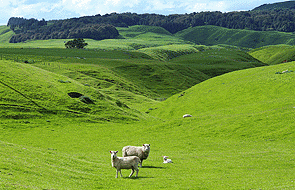
By Allan Barber
The Beef + Lamb New Zealand Economic Service’s latest stock numbers survey shows only minor changes in next season’s predicted volumes.
However total sheep numbers are estimated to fall below 30 million for the first time.
A small increase in lamb numbers is forecast as a result of a better lambing percentage, although this still depends on a normal spring, especially in the main sheep breeding areas of the East Coast, lower North Island, and the South Island.
The total sheep flock declined by 3.2% or nearly 1 million sheep. However the drop in the number of breeding ewes was only 1.4%, whereas hogget numbers were down 750,000.
The decline was more pronounced in the South Island because of continuing land use change from Canterbury to Southland; in the North Island the drought conditions in Northland had the main impact, while the rest of the island was relatively stable. The fall in the number of hoggets retained compared with the previous year poses a further threat to breeding ewe numbers for the following season.
The drop in hoggets in the South Island was the result of the change to dairy and dairy grazing, whereas the North Island fall decline was most pronounced in the Northland-Waikato-Bay of Plenty region. Numbers in this region fell 19% because of a significant carryover of underweight stock from the previous season because of drought conditions.
On a more positive note beef cattle increased by 59,000 or 1.6%, although this masked a continuing fall in breeding cows with the increase coming from store stock being held over to achieve higher weights.
71% of the beef herd is in the North Island which is where the main impact of changes in farming practice was felt. In Taranaki-Manawatu cattle numbers in all classes increased which reflected better weather conditions and farmer optimism. Cattle numbers also increased on the East Coast, but breeding cow numbers were 5.2% lower, offset by an increase in weaners and older cattle.
In the South Island where the beef herd is 1.08 million numbers were relatively stable, up 0.5%, with an increase in Marlborough-Canterbury being offset by decreases in Otago and Southland. In Marlborough-Canterbury there was a trend towards dairy grazing and finishing Friesian bulls, while in Otago the decline resulted from good autumn conditions which enabled the slaughter of older cattle at higher weights.
The outlook for calving is moderately positive due to cow condition at mating, although the final result may be adversely affected by tight feed conditions going into the spring.
Total cattle numbers are estimated to be down 15% compared with 10 years ago, while breeding cows are forecast to be 21% lower.
The survey paints a picture of an industry which continues to decline every year with the latest forecast showing little change to this trend. The positive messages about meat export values coming out of the Ministry for Primary Industries do not appear to recognise this downward trend in the livestock numbers being carried from one year to the next.
Unfortunately at the present rate the red meat sector won’t be able to achieve the optimistic forecasts of increased exports because quite simply the stock won’t be there to generate these revenue figures.
-------------------------------------------------------------------------------------------------------------------------------------------
Farms For Sale: the most up-to-date and comprehensive listing of working farms in New Zealand, here »
-------------------------------------------------------------------------------------------------------------------------------------------
Here are some links for updated prices for
- lamb
- beef
- deer
- wool
Y Lamb
Select chart tabs
---------------------------------------------------------------------------------------
Allan Barber is a commentator on agribusiness, especially the meat industry, and lives in the Matakana Wine Country where he runs a boutique B&B with his wife. You can contact him by email at allan@barberstrategic.co.nz or read his blog here ».
1 Comments
Im looking forward to hearing the spin from Mr Powdrell from Fed Farmers and the Beef and Lamb NZ guy. Forgive me but reading all the headlines had me thinking it was a golden era but behold another 1 million breeding ewes out of the system for next year.... Farmers have, and continue to, vote with their feet. The future could be very bright indeed but until we rid ourselves of the huge inefficiencies in our model the real profits will continue to be gained by those further up the supply chain.




We welcome your comments below. If you are not already registered, please register to comment.
Remember we welcome robust, respectful and insightful debate. We don't welcome abusive or defamatory comments and will de-register those repeatedly making such comments. Our current comment policy is here.